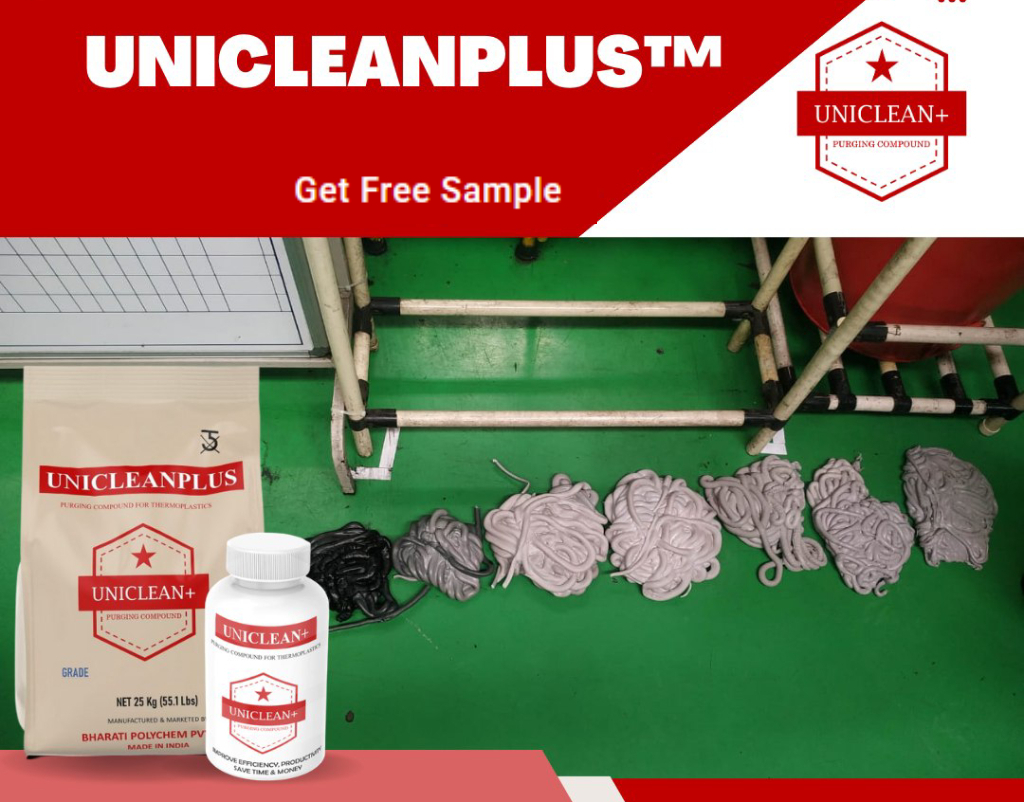From pipes and films to sheets, profiles, and cables, the plastic extrusion process is essential to the production of a vast array of goods. For manufacturers to guarantee high-quality output while controlling costs, consistency and efficiency in extrusion operations are crucial. Extrusion parameter testing and optimization, however, frequently results in material waste, which raises production costs and compromises sustainability objectives. It is feasible to optimize your extrusion process and eliminate needless waste by implementing more intelligent testing methods, using ideal Purging Compound from us at UNICLEANPLUS and contemporary optimization techniques.
Recognizing the Value of Process Optimization
Melting polymer resins and pushing them through a die to produce continuous shapes is known as plastic extrusion. Precise control is required over variables like temperature, pressure, screw speed, and cooling rate. Variations in thickness, uneven surfaces, or poor dimensional accuracy are examples of product defects that can arise from even small fluctuations.
Process optimization lowers rework, increases the lifespan of the equipment and tooling, and guarantees consistent product quality. Achieving high efficiency with little waste is not only advantageous but also essential in the cutthroat manufacturing environment of today. In order to clean the equipment you can use Purging Compounds Free Sample to determine the ideal product.
Start by Choosing the Right Materials
Each type of plastic resin reacts differently to pressure and heat. Make sure the raw material you’re using has the right moisture content, melt flow index (MFI), and thermal stability before testing your extrusion line. Unstable output and material loss during testing can result from inconsistent material properties.
Avoiding needless waste brought on by subpar resin performance can be achieved by collaborating closely with dependable suppliers and conducting material quality checks prior to production.
Prior to Full Production, Conduct Small-scale Testing
Consider utilizing pilot lines or laboratory-scale extruders for testing rather than the main production line. Although they use a lot less material, these smaller systems mimic the real production process. This enables you to test different settings, like die configurations, screw speeds, and temperature zones, without wasting a lot of plastic.
You can confidently move the ideal settings to full-scale production once you’ve found them.
Track Process Parameters Instantaneously
Systems for real-time monitoring are very helpful in cutting waste when optimizing processes. You can monitor important parameters like melt temperature, pressure, and output rate by combining sensors and automation controls.
In order to maintain constant conditions and avoid material deterioration or production that is not up to par, sophisticated control systems can even automatically adjust. Manufacturers can maximize performance while preserving product integrity with this data-driven approach.
Put Purging Compounds into Practice for Fast Transitions
A considerable amount of plastic is frequently wasted during purging when changing materials or colors. Cleaning time and waste can be significantly reduced by using high-quality Purging Compounds from us rather than virgin resin. These substances efficiently eliminate residues, avoiding contamination and enhancing the effectiveness of your switchover procedure.
Manufacturers can increase productivity while preserving a cleaner, more reliable extrusion process by cutting down on the time and material needed for purging.
Analyze Data to Promote Continuous Improvement
Long-term optimization heavily relies on data collection and analysis. Data from various test runs can be recorded to help spot patterns, inefficiencies, and areas that need work. To attain optimal performance, screw design, die geometry, and cooling systems can be fine-tuned with the aid of analytical tools or software programs.
Your extrusion line’s long-term sustainability and efficiency are guaranteed by ongoing assessment.
It’s not necessary to waste precious materials in order to test and improve your plastic extrusion process. Manufacturers can achieve notable improvements in quality and efficiency by concentrating on precise material selection, pilot testing, real-time monitoring, and intelligent purging techniques.
